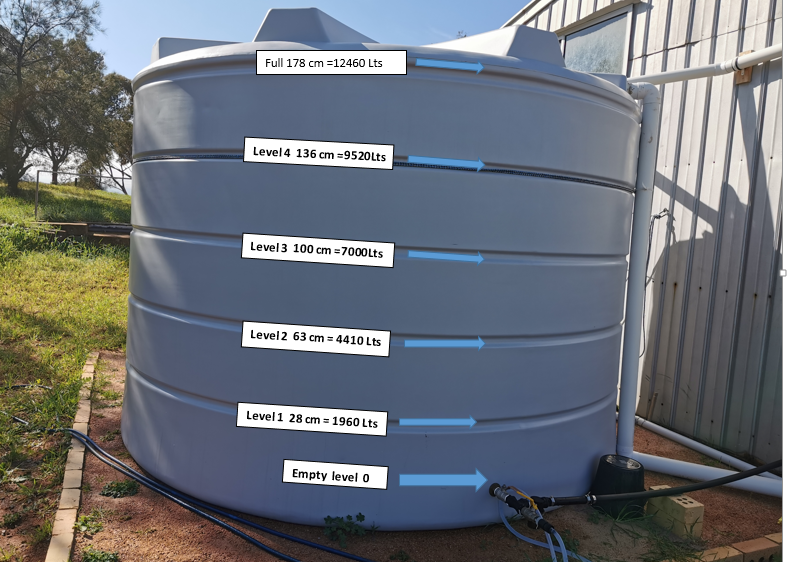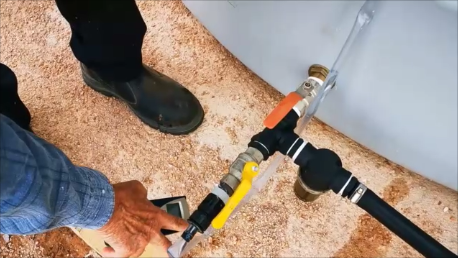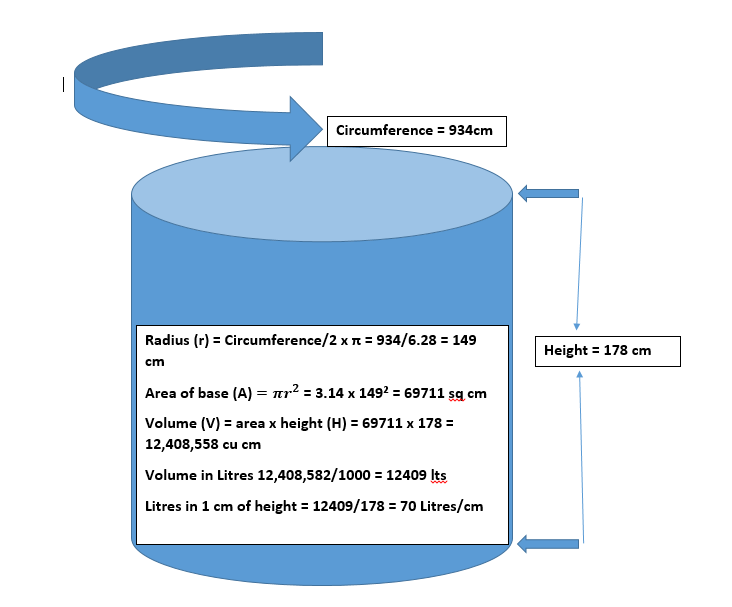
Find tank water level and volume simply and accurately
This tutorial explains a method to find a tank water level and volume simply and accurately. The basic principle used is the fact that water will find its own level provided that the bodies of water are connected and exposed to the same pressure. Here I use a ½ inch clear vinyl tube to connect the water inside the tank with exterior and therefore am able to clearly visually observe the internal water level. In the video below I also demonstrate how to measure the dimensions of the tank and use these to calculate the volume of the tank. I will also show how to establish levels on the tank which represent the volume in litres contained in the tank at any specific time. This video will be most useful to those who irrigate or use tank water for any purpose.
To find tank water level
Step 1. Attach a 1/2 inch clear vinyl tube to the tank outlet with a garden hose coupling and run the tube vertically up the outside of the tank.

Step 2. Open the outlet valve of the tank to allow the water to flow up the tube and settle at a level equal to the internal tank water level.
Step 3. Mark and date the water level if required. This rig may be left in place for future reference or attached only when you wish to take a reading. If left in place vinyl tube opening must be secured above the level of the top of the tank to avoid water loss.
To measure tank volume
Tank volume will be calculated by multiplying the area of the base of the tank by the effective height of the tank. In order to perform this calculation the height and radius of the tank will need to be known.
Step 1. Measure circumference (C) of the tank in centimetres with a tape measure. Then using the formula: radius(r) = C/2 x π calculate the radius (r)
Step 2. Calculate the area (A) of the base by using the value for the radius established in step 1 in the formula A=π x r^2 squared which will yield a value in sq cms.
Step 3. Measure the effective height of the tank from above the outlet to the level of the overflow. Calculate the volume (in cubic centimetres) by multiplying the height by the area of the base.
Step 4. convert the volume to litres by dividing the volume in cubic centimetres by 1000.
Step 5. Calculate the number of litres in the tank represented by 1 cm in height by dividing the total volume in litres by the height in centimetres.
Step 6. Mark levels on the outside of the tank to represent the volume in litres contained in the tank.
This diagram summarises the the calculations in a worked example.

This video demonstrates all the relevant measurements needed and the formulae needed for the calculations: https://youtu.be/W_jtyQMst2U
Here is another method
Comments are most welcome, try this and send us some feedback☺️ Why not visit our YouTube channel and browse through our other videos? http://www.youtube.com/c/AnnErasmus
Short Disclaimer/disclosure: My videos/articles are for informational and educational purposes only, you should consult with a professional before attempting anything seen or done in my videos/articles. Please read full disclaimer Above